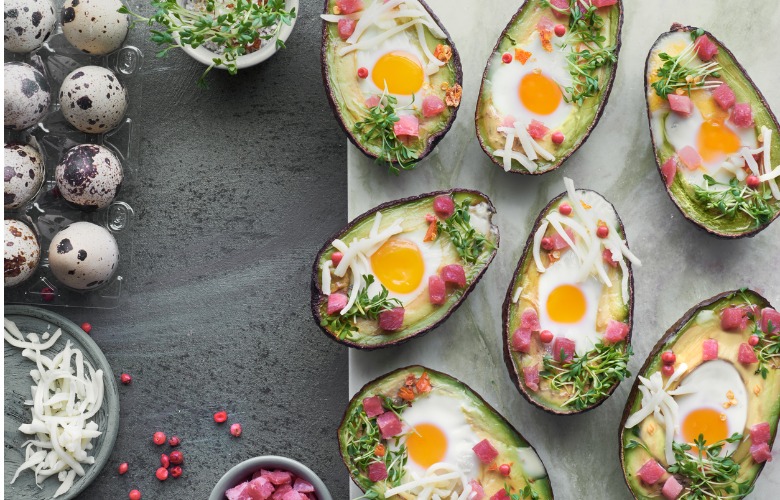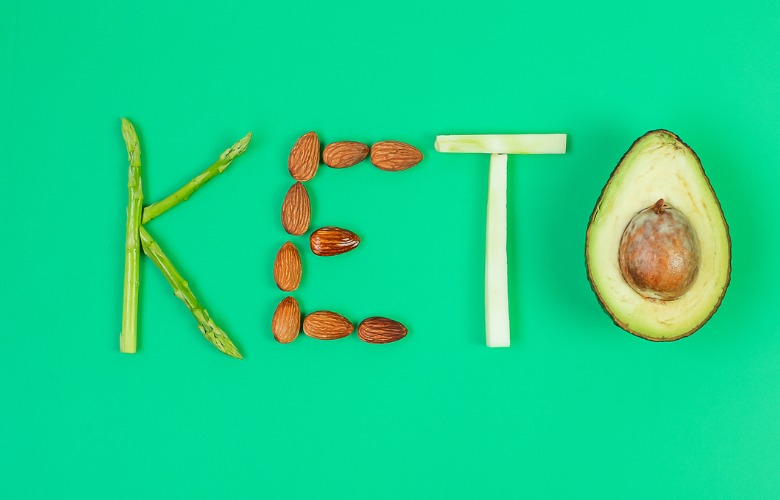Keto for Beginners (Everything You Need to Know)
You may have recently decided to cut down on your carbohydrate consumption for weight loss or other reasons. This is known as the ketogenic diet, and it’s been around for a century! The idea behind keto is to reduce the number of carbohydrates while increasing the number of healthy fats eaten to put your body into a ketosis metabolic state.
What is keto?
Keto or ketogenic diet is a low carbohydrate, high fat, and moderate protein diet known for being very efficient at burning fat for energy. As you eat a ketogenic diet, your fat turns into ketones in your liver and then supplies your brain with the energy it needs. Ketones replace glucose as a primary energy source, making keto beneficial for helping to reduce blood sugar and insulin levels.
There are four types of keto diets
Standard ketogenic diet – Very low carb (10%), moderate protein(20%), and high-fat diet(70%). This is the most popular type.
High protein ketogenic diet – Very close to the standard keto diet, but rations differ – fat (60%), protein (35%), and carbs (5%).
Cyclical ketogenic diet – Rotates between low carb with the high carb refeed – 5 days on keto and 2 days eating high carbs
Targeted ketogenic diet – Add carbs when working out – often used by athletes and bodybuilders
What is ketosis?
Ketosis happens when your body uses fat instead of carbs to fuel your body and give you energy. This metabolic state occurs when you limit the supply of glucose or sugar in your body. Usually, ketosis is achieved when limiting carb consumption to only 20 to 50 grams per day. Some tests measuring the ketones in your body can help you see if you have reached ketosis.
Symptoms you have entered ketosis
- Thirst
- Dry mouth
- Decreased hunger
- Decreased appetite
- Frequent urination
What is the keto “flu”?
Keto dieting can influence the electrolyte balance in your body, but thankfully this is a temporary effect. However, you may experience the following symptoms:
- Brain fog
- Fatigue
- Headaches
- Nausea
- Bad breath
Keto causing constipation
You may notice you are constipated while on a keto diet; the way to stop is to increase your fiber intake by eating many fiber-rich vegetables like leafy greens and taking a supplement.
How does keto help people lose weight?
Research, including a review of 13 studies that a ketogenic diet is effective for long-term weight loss. The increase in ketones improved insulin resistance, and lower blood sugar levels are the reason behind the weight loss.
Health benefits of keto besides weight loss
Supports normal heart function – Improves the risk factors including lower body fat, HDL cholesterol levels, blood pressure, and blood sugar levels.
Alzheimer’s disease – may reduce symptoms and slow progression
PCOS or polycystic ovary syndrome – keto helps reduce insulin levels thought to play a role in PCOS
Type 2 diabetes – research found that keto improves insulin sensitivity, reduces levels of the hemoglobin A1C, and helps with weight management which is linked to type 2 diabetes
Improves symptoms in those with Parkinson’s disease

What foods can be eaten on a keto diet?
It is best to eat whole foods while on a keto diet, especially if you are just starting. Over time you will find lots of options and recipes to spice things up in the kitchen. These are keto-friendly, low carb foods that you can eat:
- Avocados – quite popular for keto
- Eggs – poached, boiled, scrambled, omelets, and fried
- Fish and seafood – anchovies, crab, fish, lobster, shrimp, salmon, squid, and tuna
- Poultry – chicken, duck
- Pork – bacon, sausages, pork chops
- Lean red meat – beef and lamb
- Cheeses, butter, and cream
- Leafy greens – spinach, lettuce, kale, swiss chard, collard greens
- Herbs and spices
- Tofu and tempeh
- Nuts and seeds – almonds, Brazil nuts, macadamia nuts, peanuts, pine nuts, hazelnuts, walnuts, sunflower seeds, and pumpkin seeds
- Low-carb vegetables – bell peppers, broccoli, asparagus, mushrooms, zucchini, cauliflower, green beans, garlic, cucumbers, Brussels sprouts, celery, tomatoes, radishes, onions, and eggplant
- Healthy oils such as olive, coconut, and avocado
- Plain Greek yogurt
- Dark chocolate – the higher the cocoa content, the lower-carb it is
- Berries including blackberries, blueberries, raspberries, and strawberries
- Fruits – coconut, lemons, and limes
- Unsweetened coffee and teas
- Beverages – water, diet soda, and bone broth
- Alcoholic drinks – dry wine, champagne, distilled spirits, hard seltzers, and low-carb beer
Occasionally you can eat
- Beans
- Legumes
- Milk
What foods should be eliminated or reduced from your diet while doing keto?
- Grains including rice, cereal, crackers, chips, bread, and beer
- Starchy vegetables like corn, potato, sweet potato, and beets
- High-sugar fruits including bananas, dates, mango, pears
- Baked goods including gluten-free versions
- Limit processed meats
- Limit processed foods
- Juices
- Honey
- Syrup
How to eat out while on keto
The best bet is to order a protein such as fish, meat, chicken, tofu, or eggs and ask for a side of low-carb vegetables with butter. Keto snacks and deserts are more complex when eating out – it may be best to bring something with you, whether it is a handful of nuts, a bowl of berries, or a thermos full of nourishing bone broth.
Can you do keto if you are vegetarian or vegan?
If you eat eggs, dairy, and plant-based proteins, if you are vegetarian and want to have a ketogenic diet. You can eat from the food list above minus the fish, meat, pork, and poultry. You may also need to supplement the nutrients – vitamins B12, D, iron, calcium, omega 3’s, and zinc.
If you are on a vegan diet, it won’t be easy to keep to keto.
Probiotics and Keto
Keto can be hard on digestion and can be prone to cause constipation, diarrhea, and bloating. Your gut relies on a variety of diverse microbes or probiotics to remain balanced. Prebiotics are food for probiotics. Probiotics are the “food” your beneficial gut bacteria depends on to thrive.
Limiting and eliminating foods from your diet can change the way your gut microbiome works and how you digest your food. Supplementing with probiotics while on a ketogenic diet can be an excellent combination for your body and how you feel.
Keto-friendly prebiotic foods
- Onions
- Dandelion greens
- Chicory root
- Garlic
- Leeks
- Asparagus
Keto-friendly probiotic foods
- Kimchi
- Pickles
- Kombucha
- Kefir
- Olives
Keto Supplements
Collagen peptides – Protein-rich however, when taking collagen is a good idea to balance it out with coconut oil, grass-fed butter, or ghee which are all healthy fats
Electrolytes – Keto Electrolytes is a potent electrolyte formula that is ideal for anyone on the Keto Diet. It provides full-spectrum electrolytes your body may lack to help avoid electrolyte imbalance, dehydration, leg or other muscle cramps, which are part of what is termed the “keto flu.”
MCT oil – full of healthy fats, energy booster, and keto-friendly
What is intermittent fasting?
Three meals a day is old news. Our ancestors ate quite differently, and their bodies thanked them for it. Scientists have discovered that fasting can:
- Supports normal insulin sensitivity
- Supports normal ghrelin (“hunger hormone”) levels
- Slows the aging process by increasing the rate of HGH production
- Lowers triglycerides levels
- Decreases inflammation
- Fights free radical damage
- Boosts fat-burning
- Supports weight loss
Intermittent fasting is not a diet; it is a pattern of eating that changes when you eat, not what you eat. While there are different strategies, many people fast by eating during a 12-hour window and then fasting for 12 hours. This will mimic the eating habits of our ancestors and help our body return to the natural body rhythms before processed foods and sugars were so prevalent in our diets. This can help stabilize insulin levels. It is essential to understand that intermittent fasting is not a diet. It is a pattern of eating that “disrupts” modern eating patterns. Simply put, it changes when you eat instead of what you eat.
When you are digesting and absorbing food, your body is in the “fed” state, which begins when you start eating and goes on until you have absorbed your food, which is 3 to 5 hours later. When you are in a fed state, it is difficult for your body to burn fat because insulin levels are high. However, in the post-absorptive state, which is 8 to 12 hours after your last meal, your insulin levels are low, enabling your body to enter a fast state which triggers burning fat.
Who shouldn’t be on a ketogenic diet?
- Those pregnant or breastfeeding
- Healthy children
- People with kidney issues
- People with gallbladder issues
- People with pancreatic issues
- People with disordered eating history
- People who have had bariatric or gastrointestinal surgery
A keto diet can be an interesting and fun way to lose weight. There are so many recipes and social media accounts devoted to keto – take some time to explore and see what works best for your lifestyle and eating preferences!

Jemile earned a degree in Food Studies and Writing and has worked for almost 23 years in the medical and health industries. She has been a digital marketing consultant for Acupuncture Atlanta since 2011 as the social media manager and content manager. Writing has been a childhood dream for Jemile and writing daily for clients in the health, wellness, food, and art industries have been phenomenal. Jemile is originally from Brooklyn, NY, and lives in the Hudson Valley, NY. She lives with her husband, two daughters, her dog, and two fish. You can contact Jemile via Linkedin, her mom blog, or her website, lunaroseconsulting.com




